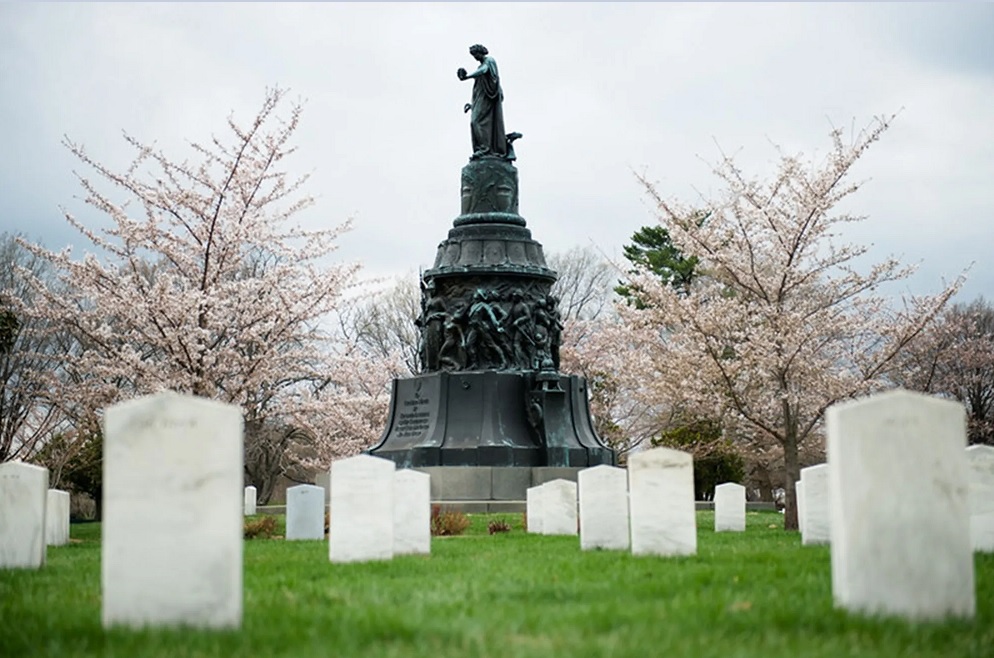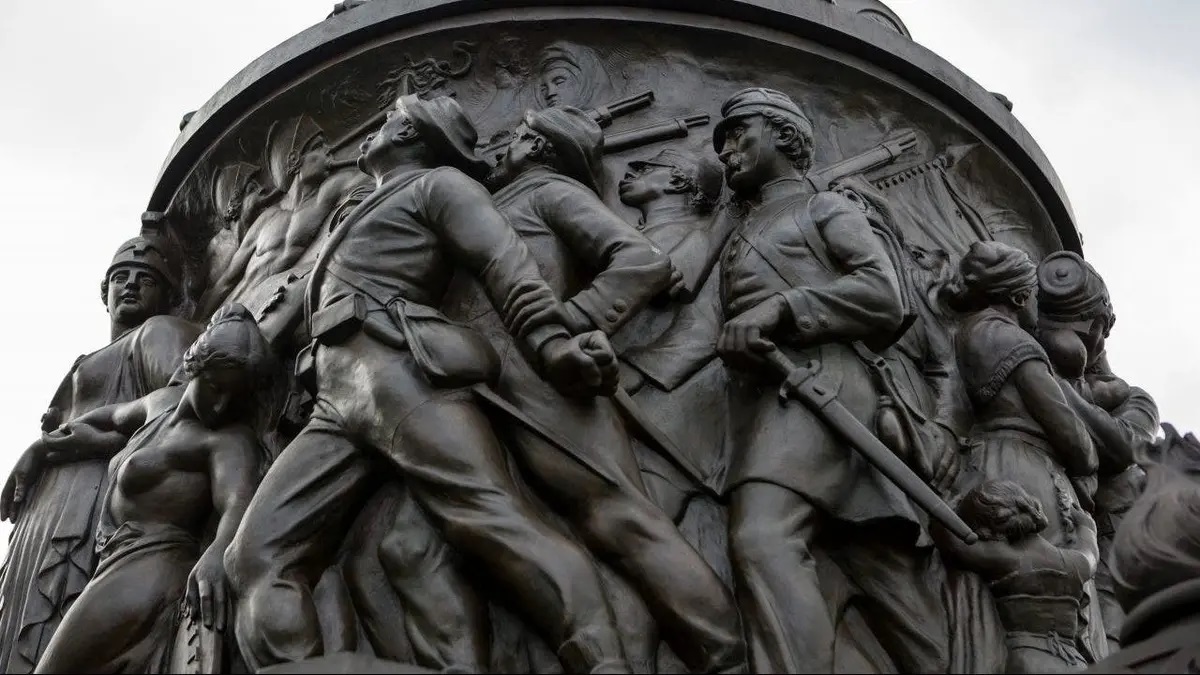
Despite opposition, the Confederate memorial is set to be taken down from Arlington National Cemetery by the Biden administration (Photo: NY Post)
Arlington National Cemetery to Remove Controversial Confederate Statue
A Confederate reconciliation monument is going to be taken down from Arlington National Cemetery by the Biden administration, even though more than 40 Republican congressmen have recently tried to stop the move. Around the memorial, safety fencing has been put up, and the removal should be done by December 22, according to the graveyard staff. This choice was made because of a report from an independent commission in 2022 that said memorials to the Confederacy should be taken down.
Moses Ezekiel created the statue in 1914, which is of a woman in bronze standing on a 32-foot pedestal. The statue represents the American South and has a Bible verse on it that means peace and unity. But the statue also shows some controversial things, like a Black woman called “Mammy” and a slave man who follows his owner to war, which has caused a lot of discussion.
The governor of Virginia, Glenn Youngkin, doesn’t agree with the removal and wants to move the monument to the New Market Battlefield State Historical Park in the Shenandoah Valley. The steps needed to get the monument ready to be moved have been completed. The bronze parts will be moved, but the granite base and foundation will stay where they are to avoid disturbing the graves nearby.
READ ALSO: New York’s Third District Special Election: A Historic Showdown Unfolds
Backlash and Debate Surrounding the Monument’s Removal
The choice to take down the monument at Arlington National Cemetery has caused a political debate. More than 40 Republicans in the House say that the memorial doesn’t honor the Confederacy but instead represents peace and unity in the country. They say the Department of Defense needs to follow what Congress clearly said in the law about the Naming Commission’s power.
This move to take down Confederate symbols from public places of interest is part of a larger plan started after the 2020 George Floyd protests to change the names of military bases that were named after Confederate soldiers. For example, Fort Bragg was changed to Fort Liberty. Such acts show how people are still arguing about how to protect historical sites and how to bring people together despite deep cultural differences.
Looking ahead, the decision to take down the Confederate statue at Arlington National Cemetery makes us think about the complicated historical meaning of these kinds of memorials, how they affect public places, and how representation shapes the cultural story for future generations.
READ ALSO: Former FBI Official Sentenced For Illicit Ties With Russian Oligarch
























